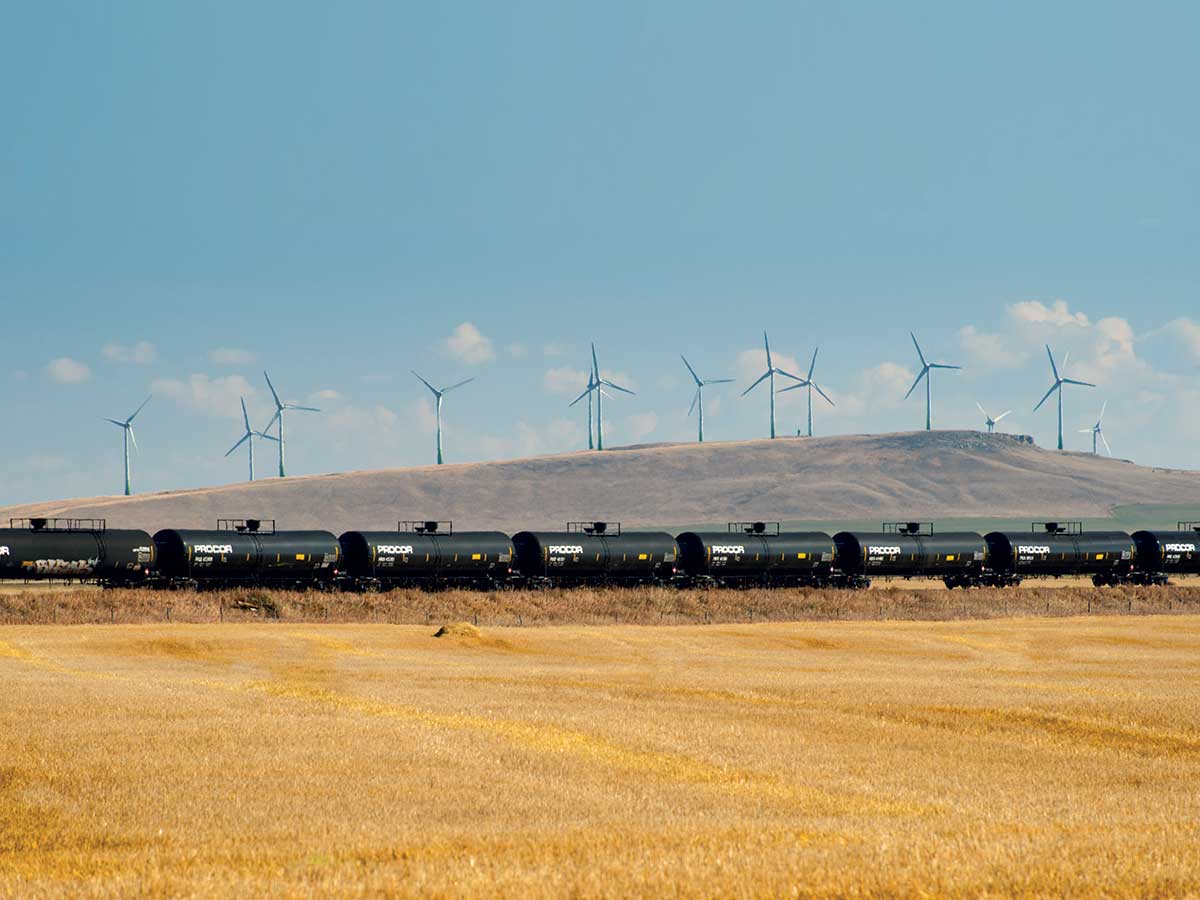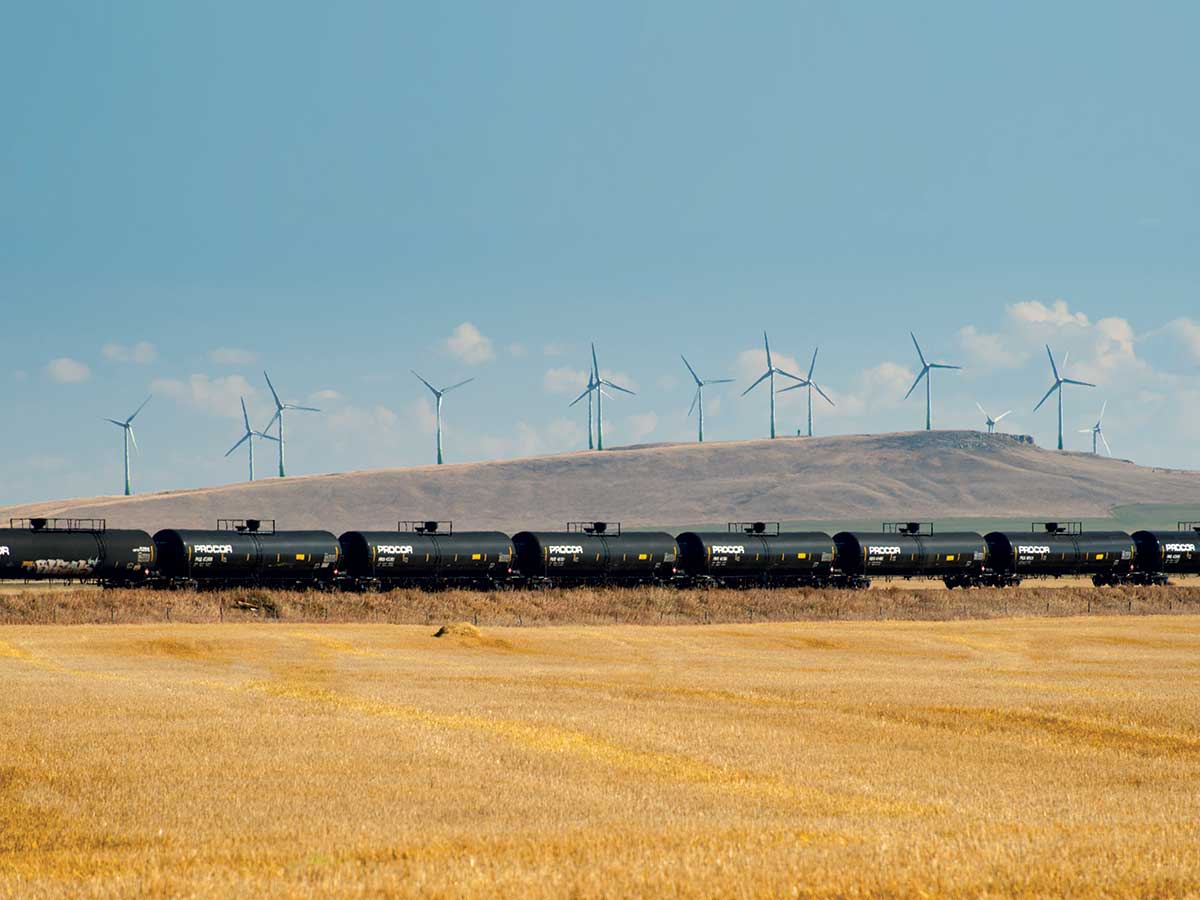
After oil, what’s next for Alberta?
 Alberta is third among the provinces in wind power capacity (Getty Images)
Alberta is third among the provinces in wind power capacity (Getty Images)
Some startling news hailed from California as 2018 drew to a close. The U.S.’s most populous state has now purchased more than 500,000 electric cars—177,781 of those vehicles in the last year, and 24,686 in December alone. While electrics still comprise a minority of overall car sales, the trend lines are clear: electric vehicle sales are showing exponential growth. And as goes California so, eventually, shall go America. And everywhere else.
Internal combustion will likely be with us for a generation yet, but it isn’t unreasonable to think demand for oil and gas will soon plateau and even decline as new, more sustainable technologies become common and affordable.
This could bring a promising new future—or a terrifying one. For an oil-producing province like Alberta, the trend should lead to some serious strategic reimagining; the province is already beleaguered by a lack of pipeline capacity that pushed its oil prices down drastically. And after the 2015 global oil price crash, Alberta’s annual revenue from oil sands royalties declined from more than $6 billion to less than $1 billion. Unemployment now sits at 6.3 per cent, higher than the national average in one of the youngest provinces in the country.
But the real risk is existential. How does the province adapt when the demand for oil simply begins to peter out?
Research and development that leads to decarbonization solutions for Canadian oil and gas will help. Alberta has already been working in this area, investing in carbon capture and storage, for example. There is even some promising early technology that may eventually be able to extract carbon from the atmosphere, reversing the worst effects of climate change.
Sarah Keyes, CPA, Sustainability Principal at CPA Canada, notes the importance of transforming the labour force for the low-carbon economy, citing Iron and Earth, a worker-led not-for-profit that’s retraining oil-and-gas employees to work in renewable resources.
Revenue from oil sands royalties dropped from $6 billion to less than $1 billion
A little-known fact about Alberta: the south of the province is subject to intense winds and long stretches of sunshine, ideally situating it for wind and solar power. As of August 2018, it had 1,483 megawatts of wind capacity—placing it third in the country after Ontario and Quebec. Under its climate plan, Alberta intends to source one-third of its electricity from renewable energy by 2030.
Of course, renewable energy alone won’t replace the huge economic and employment opportunities traditionally supplied by oil. So the government is ramping up efforts to diversify the economy. As Premier Rachel Notley put it back in 2015: “Growth used to be taken for granted, but the shock of low oil prices has laid bare how vulnerable these old attitudes have made us.”
Researchers are exploring other uses for bitumen, including asphalt pellets and even the creation of graphene or carbon fibres that can be used to replace steel in concrete and wood.
The province is trying to bolster its already strong agriculture sector. Real GDP for agri-food industries outperformed the economy through the worst of the downturn, in 2015 and 2016, and grew again in 2017 to $6.5 billion. Alberta has courted the high-growth cannabis industry and seen several major growers, including Aurora Cannabis, set up shop, drawn by the province’s low taxes, private retail regime, cheap energy and abundant sunlight.
The key, says Ken Kobly, CPA, the president and CEO of the Alberta Chambers of Commerce, is to maintain focus. “I’m old enough to remember four downturns in the economy, and every time we get into one, we seem to have governments of all political stripes say, ‘Now we have to study diversification.’ Then when oil rebounds it’s like, ‘Oh, look! A squirrel!’ and we lose concentration on trying to diversify.”
“Accountants are often the frontline professionals who find new ways to attract investment to their companies…”
With two major universities, in Calgary and Edmonton, and a host of colleges, the province is well situated to take advantage of research capital in everything from leading-edge environmental technology to experimental agriculture. “They are great at developing product and ideas for product,” says Kobly. “We need to help commercialize them rather than have those ideas go elsewhere in the world.”
Two years ago, the province brought in a dedicated tax credit to help businesses invest in new technology. Accountants have played a big role in making it work, says Jean-Marc Prevost, spokesperson for Alberta’s Ministry of Economic Development and Trade: “Accountants are often the frontline professionals who find new ways to attract investment to their companies, particularly for companies that are expanding in non-traditional sectors.”
And in 2017, the Alberta government hired a British-born venture capitalist who was considered key in helping another oil-dominant area make the shift from petrochemicals. Laura Kilcrease helped Austin, Texas, evolve into one of the top technology cities in the U.S. She’s now CEO of Alberta Innovates, a government-funded corporation that promotes and finances research and technology development. The province is hoping she will help with a similar turnaround.
What it hasn’t done is increase her budget. In fact, since the oil crash of 2015, funding for Alberta Innovates has steadily declined, and it cut dozens of jobs in 2017.
Any scrimping on investments in diversification now may mean fewer resources to make the transition in the long run. Moonshots cost money.
And they are worth taking, since Alberta has all the ingredients for success. With a commitment to “evidence-based decision-making,” a highly skilled workforce and academic communities coming up with innovative solutions, says Keyes, “there’s an opportunity for Alberta to lead the way.”